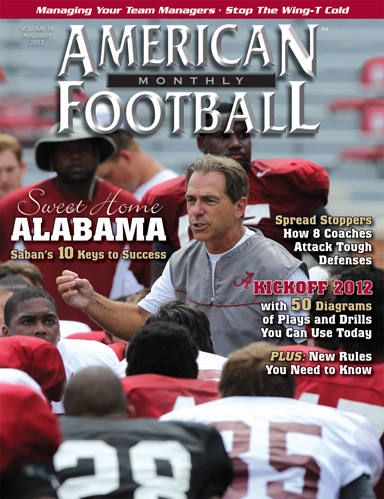Article CategoriesAFM Magazine
|
Wide Receiver Play Base Fundamentals vs. Press Coverageby: Kevin CahillWide Receivers Coach • University of Maine © More from this issue The proper technique for hand releases and quick feet are critical for the wide receiver in defeating press coverage. We spend a good amount of time in practice working on individual skills. One of our focuses in practice is releases vs. a hard corner. We work on many different releases, with a goal for our players to develop a repertoire. We spend a great deal of time breaking down each individual skill so it will become a habit for them. We break the skill of releases down into two different parts – the hand release (hand fight) and the release by the feet (quick feet). We further break down each release (hand and feet) and create a menu of skills for our players to choose from and master. This will ultimately build their overall skills. Each player has a different repertoire and no two players’ skills are exactly....The full article can only be seen by subscribers.
|
|
|||||||
| HOME |
MAGAZINE |
SUBSCRIBE | ONLINE COLUMNISTS | COACHING VIDEOS |
Copyright 2025, AmericanFootballMonthly.com
All Rights Reserved





